What is Layer 3? Layer 3 is still a fairly new concept in the Crypto market, but 3/4 of the big players in Layer 2 including Optimisim, ZkSync and StarkWare are quietly building and expected to launch in 2023. So What is Layer 3 and what mission is Layer 3 born with? Let’s find out through this article.
What is Layer 3?
We will not go directly into the definition of what Layer 3 is because up to now this segment is still quite new in the market, so we will look at the operation of Layer 3 of prominent Layer 2 projects. to be able to come up with your own definition.
Let’s take a look at the L3 implementations of StarkWare, Optimism and ZkSync together to better visualize L3.
StarkWare: When Layer 3 is Layer 2 of Layer 2
Basic visualization of L3
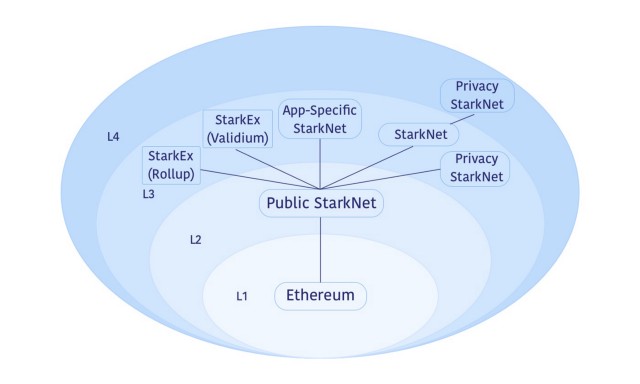
In the last days of 2021, StarkWare, the owner of two solutions including StarkEx and StarkNet with a valuation of $8B, introduced their first definitions of Layer 3.
According to StarkNet, L2 was born to solve the problems of slow transaction speeds and high transaction costs occurring on L1 while still maintaining the security and decentralization inherited from L1. However, there are some projects and Dapps that need more autonomy and autonomy in development, which is the reason for the birth of L3.
The relatively straightforward definition from StarkNet is that L3 is built on L2 similar to how L2 is built on L1. So L2 is L2 of L2.
Transactions on L2 will be compressed into 1 block and then sent to L2 at multiple L2s. L2 continues to compress these blocks to send to L1. Of course, each transaction from L3 to L2 and L2 to L1 requires proof. transaction certificates so the hardware requirements on L2 will be more and the decentralization on L2 will be talked about more in the future.
Therefore, if L2 can reduce the cost by 1,000 times compared to L1, then L3 can reduce it by 1,000,000 times compared to L1 while it still receives security from L1.
So the advantages of L3s will include the following points:
- Almost unlimited scalability. And if the theoretical numbers are confirmed in practice, it will be faster than Visa or Master Card, thereby fully qualifying for speed and transaction fees for mass adoption.
- Have autonomy in choosing development and expansion directions.
- Interoperability between L2 and L3 is cheaper and simpler.
- L3 to L3 interoperability is cheaper and simpler.
How do L3s on StarkNet work?
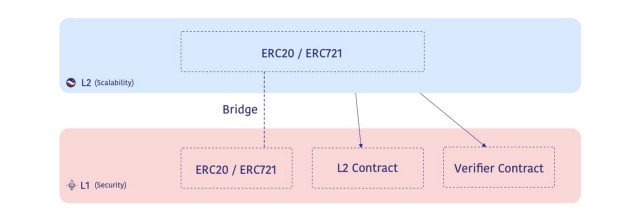
The operating mechanism of Layer 2 is basically as follows:
- Smartcontract is built on top of L1 to track the status of L2.
- Bridge Contract on L1 will manage deposits and withdrawals to and from L2.
- Based on the transaction evidence sent from L2 to L1, Smart contracts can verify whether the transactions on L2 are valid or not, thereby converting the status.
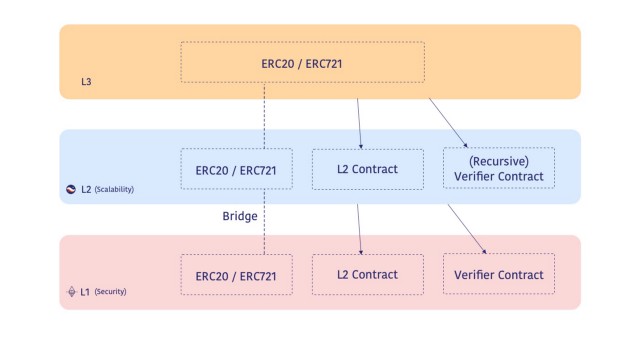
Similar to how it works and is deployed on L2, L3 is similar. Smart contracts are built on top of L2 to monitor the state of L3.
For StarkNet, future StarkEx platforms will be converted and developed on L3. Besides, L3 will not be the final destination in the expansion from StarkWare.
ZkSync: When Layer 3 is shaped according to the Internet Of Blockchain
At the time of writing, although ZkSync 2.0 is still in the Baby Alpha stage and has not yet reached the Alpha Maint stage and further integrates zkPorter, the Matter Labs team has a vision for the next stage after they complete ZkSync. 2.0 is Layer 3. According to Matter Labs, Layer 3 is expected to be tested in Q1/2023, however, according to Matter Labs’ work history, the official time will most likely be pushed to Q3 or Q4/2023. .
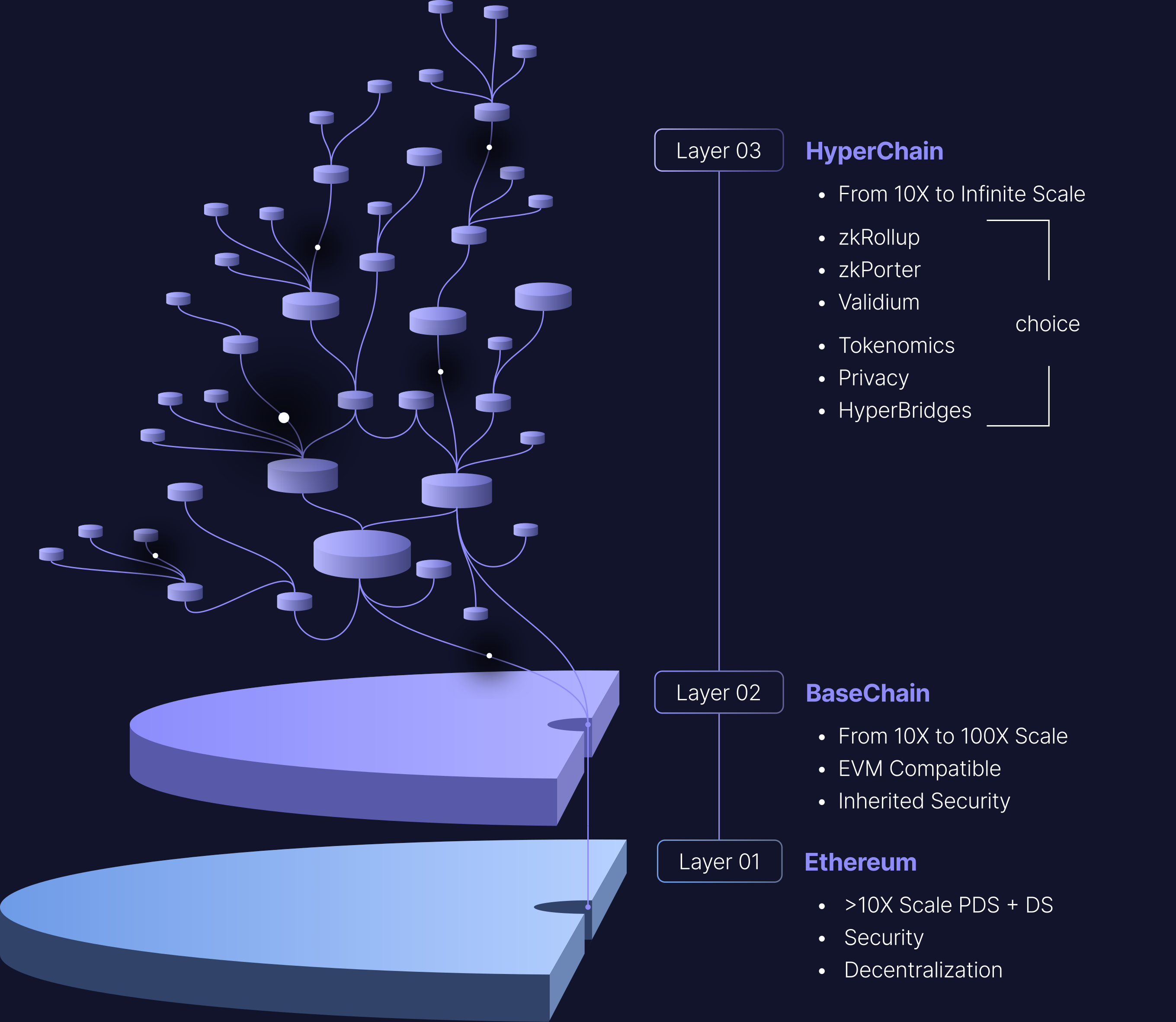
L3s will be independent Blockchains customized depending on the needs of the development team and can choose from many different expansion capabilities such as zkRollup, zkPorter or Valadium. These blockchains are named HyperChains.
All HyperChains, instead of using regular bridges, will be connected to each other through a single bridge to ensure security for the entire chain, HyperBridge. With HyperBridge, the security of the entire chain is increased 10 times compared to conventional bridges.
Regarding performance, according to Matter Labs, with L2 solutions they expect to increase 10 – 100 times but with L3 it will be limitless.
Transaction costs on L3 will decrease exponentially depending on whether HyperChains post data on-chain or off-chain.
Regarding programming capabilities, the Matter Labs team is also building an SDK framework for developers to easily build HyperChain on the available framework. Sodility and Vyper will not be the only programming languages. Besides, Matter Labs is expected to integrate all modern and popular programming languages such as Rust, C++, Swift,…
Next about privacy is a customization besides that HyperChains have the right to use their own tokens to pay Sequencers, Provers, DAs similar to transaction fees on the network.
Simply envisioned, ZkSync’s L3 will be developed towards the Internet Of Blockchain. With independent blockchains called HyperChain and cross-chain bridge HyperBridge.
|
Cosmos |
Avalanche |
Polkadot |
ZkSync – L3 |
|---|---|---|---|
|
Hub |
Subnet |
Parachain |
Hyperchain |
|
IBC |
– |
XCM |
HyperBridge |
Personal opinion
In my opinion, L3 that Matter Labs is trying to build is shaped like an Internet Of Blockchain concept. HyperChains will be the place to execute transactions and the remaining issues such as transaction consensus and information storage will take place on the L2 itself, ZkSync.
Projects can still be built normally on L2, but if they want to build their own ecosystem, if they want to use their own tokens as transaction fees, they can move to L3 where they have full authority to decide how to proceed. scalability, privacy, tokenomics,…
Optimism Right Next Door
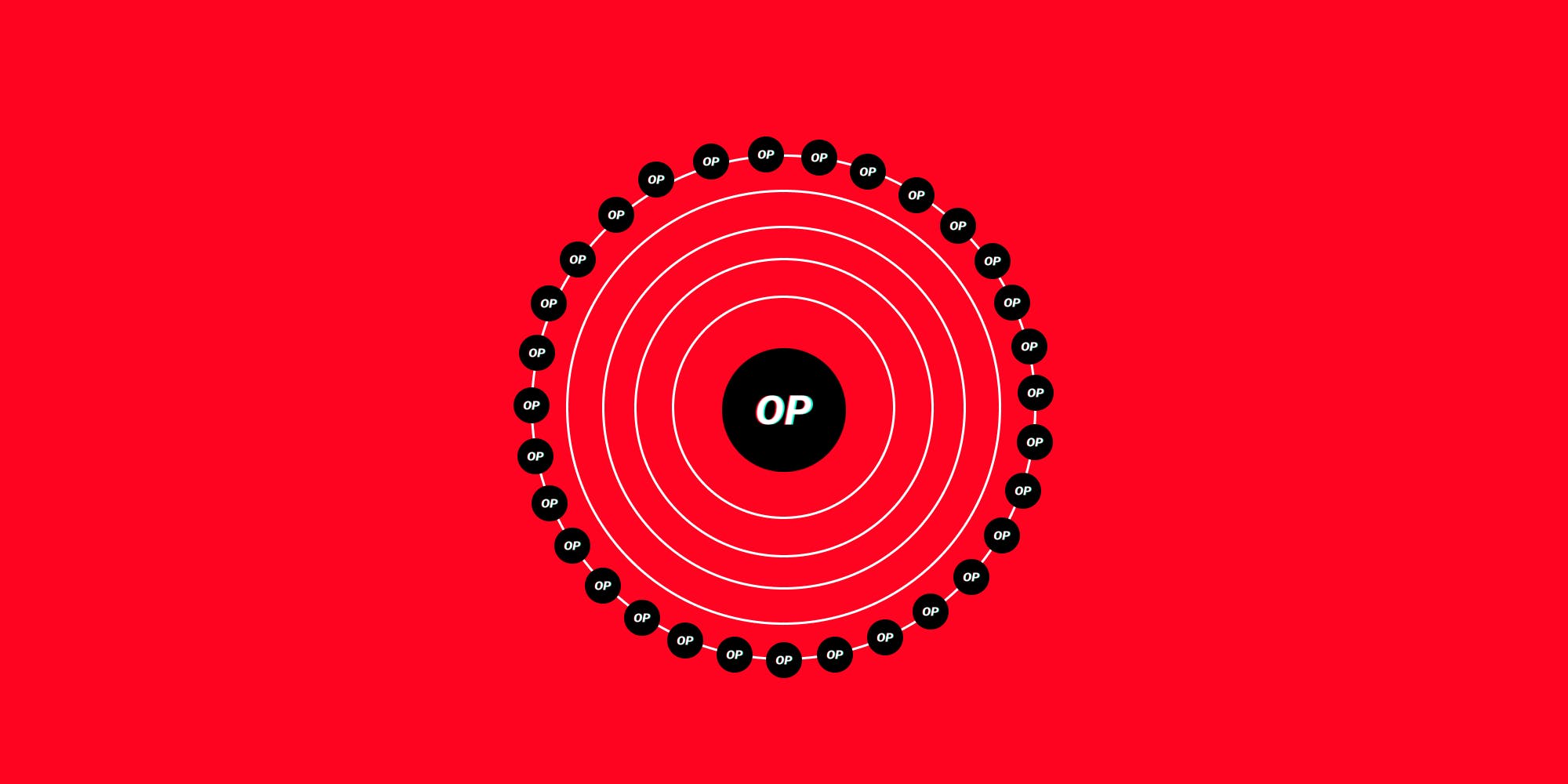
Op Stack is considered the next expansion solution that the Optimism team is aiming for after the Bedrock update. Op Stack is introduced as a modular, open source model with high scalability and interoperability.
With Op Stack, developers can build their own blockchains, depending on their intended use, and Optimism will give developers all the most advanced tools to do so. These chains are currently named Op-chain.
And the entire model of Optimism in the future will be called Superchain.
Up to now, Optimism is the most forked ORU blockchain, the most prominent being the game OpCraft followed by the Game Boy project.
With Op Stack, you can build your own blockchains and have complete freedom to decide whether you will choose Ethereum, Celestia or Optimism itself as the place to store data. Not only that, the upcoming Bedrock update will allow any Op-chain to use any transaction proof including zk proof.
Op Stack will be the beginning for future L2s and L3s.
Summary
L3 is still a relatively new term in the crypto market and will require a lot of time, human resources and money to develop because currently the potential of L2 has not been fully exploited yet on L3. . But for real mass adoption, L3 is quite promising compared to building completely new Monolithic or Modular Blockchains, taking advantage of the security and decentralization available on Ethereum is the best thing.


